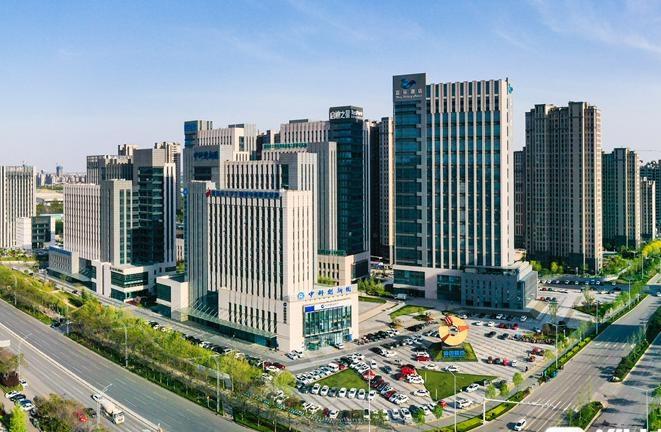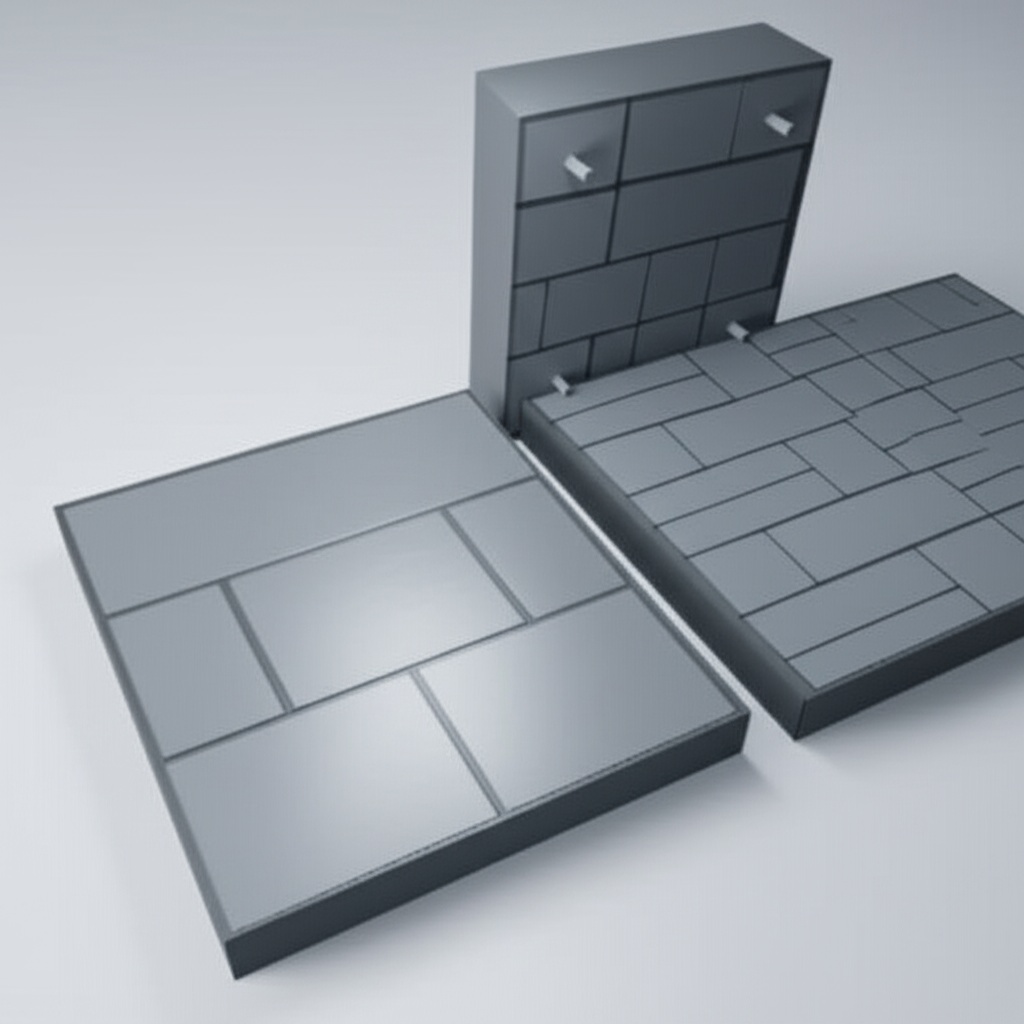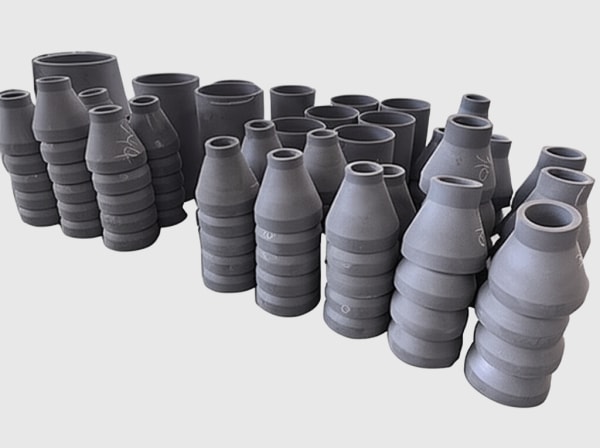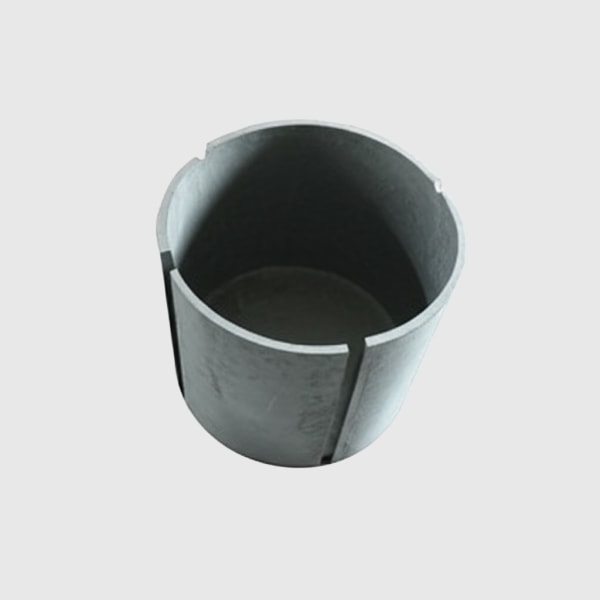50-150kHz SiC 컨버터를 위한 고주파 자성 재료 및 통합 EMI/LCL 필터
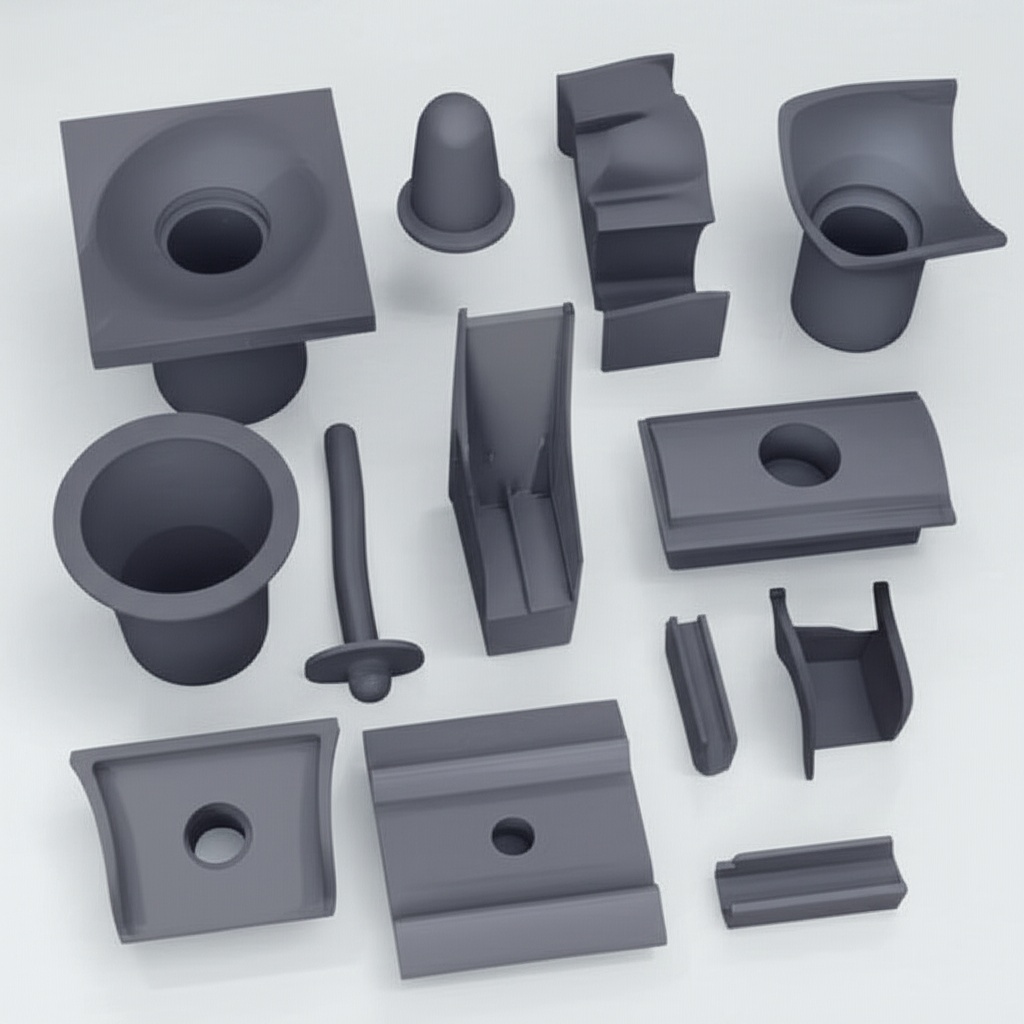
공유
제품 개요 및 2025년 시장 관련성
고주파 자기 재료 및 통합 EMI/LCL 필터 솔루션은 50–150k에서 작동하는 탄화규소(SiC) 컨버터의 잠재력을 최대한 발휘하는 데 필수적입니다.Hz. 저손실 코어, 최적화된 권선 기술 및 소형 필터 아키텍처를 결합하여 이러한 솔루션은 수동 부품 크기를 줄이고, 총 고조파 왜곡(THD)을 줄이며, 파키스탄의 섬유, 시멘트 및 강철 부문이 고효율 전력 변환으로 전환하는 데 중요한 11–33kV 배전 상호 연결에 대한 전력망 규정을 지원합니다.
2025년 파키스탄의 산업 사용자는 열, 먼지 및 공간 제약에 직면해 있습니다. SiC의 더 높은 스위칭 주파수는 인덕터 및 변압기 부피를 줄이는 반면, 고급 페라이트, 나노결정 및 비정질 금속은 코어 손실을 최소화합니다. SiC 스위칭 에지에 맞게 설계된 통합 EMI/LCL 필터는 전도 및 방사 방출 마진을 개선하고 일반적인 중전압 상호 연결 관행을 준수합니다. 결과는 문서화된 이득과 일치합니다. 시스템 수준 효율 ≥98.5%, 최대 2배 전력 밀도, 냉각 부피 약 40% 감소로 가혹한 환경에서 낮은 LCOE와 가동 시간 개선으로 이어집니다.

기술 사양 및 고급 기능
- 주파수 범위: 50–150kHz SiC 스위칭에 최적화
- 코어 옵션:
- 고주파에서 중간 자속 밀도를 위한 저손실 페라이트(예: MnZn 제형)
- 낮은 코어 손실과 향상된 온도 안정성을 갖는 고자속 밀도를 위한 나노결정질 및 비정질 금속 코어
- 권선 기술:
- 대상 주파수에서 스킨/근접 효과를 위해 선택된 스트랜드 직경을 갖는 고가닥 수 리츠 와이어
- 평면 인덕터 및 통합 변압기를 위한 호일 권선
- 누설 및 AC 저항을 최소화하기 위한 인터리브 권선 기술
- 열 관리:
- 낮은 열 저항 보빈, 필요한 경우 열 전도성 포팅
- 방진 인클로저와 호환되는 방열판 및 공기 흐름 채널
- 필터 아키텍처:
- 댐핑 네트워크(수동 또는 능동)를 갖춘 MV 상호 연결 THD 목표에 맞게 크기가 조정된 LCL 필터
- SiC 에지 속도(dv/dt, di/dt)에 맞게 조정된 통합 차동 및 공통 모드 EMI 필터
- EMI를 줄이기 위해 기생 커플링 및 스트레이 커패시턴스를 최소화하는 레이아웃
- 재료 및 규정 준수:
- 125–155°C급 작동에 적합한 고온 절연 시스템
- 고조파 제한 및 간섭 제어에 대한 일반적인 유틸리티 기대치에 맞춰 설계
- 테스트 및 유효성 검사:
- 코어 손실 및 임피던스의 주파수 스윕 특성화
- 전도 방출 사전 규정 준수(150kHz–30MHz) 및 그리드 인터페이스에서 THD 검증
설명적 비교: SiC용 고주파 자성체 vs 기존 자성체
| 기준 | 50–150kHz SiC에 최적화된 자성체 및 필터 | 10–20kHz 실리콘용 기존 자성체 |
|---|---|---|
| 대상 주파수에서의 코어 손실 | 페라이트/나노결정질 선택으로 낮음 | 손실이 더 큼; 더 큰 코어 필요 |
| 인덕터/변압기 크기 | 현저히 작음(소형 캐비닛 가능) | 더 큰 부피와 무게 |
| 권선 손실(AC) | 리츠/호일 및 인터리빙을 통해 완화 | 스킨/근접 효과로 인해 상승 |
| EMI 성능 | 통합 CM 초크 및 신중한 기생 제어 | 더 큰 필터 필요; 규정 준수가 더 어려움 |
| 열 거동 | 45°C 주변 온도에서 온도 상승 감소 | 더 뜨거운 작동, 감량 필요 |
| LCL을 사용한 시스템 THD | 작은 수동 소자를 사용하여 낮은 THD에 더 쉽게 도달 | 더 부피가 큰 L/C 값 필요 |
주요 장점 및 입증된 이점(전문가 인용문 포함)
- 소형 수동 소자: 고주파 작동은 더 작은 L 및 C 값을 허용하여 캐비닛 크기와 무게를 20–40% 줄입니다.
- 낮은 손실: 재료 및 권선 최적화는 코어 및 구리 손실을 줄여 ≥98.5% 시스템 효율을 지원합니다.
- 향상된 규정 준수: SiC 에지 속도에 맞게 조정된 통합 EMI 및 LCL 설계는 낮은 THD를 촉진하고 전도/방사 방출을 줄입니다.
- 더 나은 열 마진: 효율적인 자성체는 45°C+ 주변 온도에서 더 시원하게 작동하여 신뢰성과 가동 시간을 유지합니다.
전문가의 관점:
"와이드 밴드갭 장치로 스위칭 주파수를 높이면 자성체와 필터가 고주파 손실과 EMI를 관리하도록 신중하게 설계된 경우 수동 소자 크기를 크게 줄일 수 있습니다." — IEEE 전력 전자 공학 통찰력 및 표준 지침(ieee.org)
실제 응용 분야 및 측정 가능한 성공 사례
- PV 중전압 상호 연결(파키스탄 남부 산업 단지): 나노결정질 LCL 필터를 사용하여 100kHz SiC로 업그레이드하면 필터 부피가 ~35% 감소하고 총 인버터 효율이 97.3%에서 ≥98.5%로 향상되었습니다. 인버터 실의 열 부하가 감소하여 더 작은 HVAC 용량을 사용할 수 있습니다.
- 섬유 시설 VFD 개조(펀자브): 고주파 공통 모드 초크 및 최적화된 출력 필터는 고속 직조기에 대한 EMI 유발 트립을 줄이고 가청 소음을 줄여 여름 피크 기간 동안 생산 가동 시간을 개선했습니다.
- 시멘트 공장 보조 드라이브: 방진, 밀폐형 EMI/LCL 어셈블리는 열 안정성을 유지하여 필터 청소 간격을 연장하고 유지 보수 가동 중단 시간을 줄였습니다.
선택 및 유지 관리 고려 사항
- 코어 선택:
- 50–80kHz: 저손실 페라이트는 비용 효율적입니다.
- 80–150kHz: 더 나은 손실 및 온도 성능을 위해 나노결정질/비정질 금속을 고려하십시오.
- 권선 설계:
- 작동 주파수에서 스킨 깊이에 맞게 리츠 스트랜드 직경을 선택합니다.
- 변압기에서 누설 및 AC 저항을 줄이기 위해 인터리빙을 사용합니다.
- 기생 제어:
- 공통 모드 전류를 제한하기 위해 접지까지의 스트레이 커패시턴스를 최소화합니다. 유익한 경우 정전 차폐를 통합합니다.
- 댐핑 및 THD:
- 그리드 임피던스 변화에 따른 대상 THD에 맞게 LCL 및 댐핑 네트워크의 크기를 조정합니다. 최악의 경우 소스 임피던스로 검증합니다.
- 환경 경화:
- 먼지가 많은 위치를 위한 교체 가능한 필터 매체가 있는 고 IP 인클로저. 막힘에 저항하는 공기 흐름 경로를 계획합니다.
- 예방 유지 보수:
- 핫 스폿에 대한 IR 스캔. 주기적인 인덕턴스/Q 팩터 확인. 지역 먼지 부하에 맞게 조정된 청소 일정.
산업 성공 요인 및 고객 사용후기
- 전력 스테이지 및 게이트 드라이브 팀과의 공동 설계를 통해 최적의 dv/dt 관리 및 최소 EMI 재작업을 보장합니다.
- 조기 사전 규정 준수 EMC 테스트는 프로젝트 지연 및 변경 주문을 줄입니다.
고객 피드백:
"고주파 자성체로 전환하면 필터 설치 공간이 줄어들고 규정 준수 여유가 개선되었습니다. 뜨겁고 먼지가 많은 환경에서도 과도한 크기 조정 없이 THD 목표를 달성했습니다." — 신드에서 MV 인버터 배포 엔지니어링 책임자
미래 혁신 및 시장 동향
- 추가 밀도 증가를 위한 통합 냉각 채널이 있는 평면 자성체
- 그리드 임피던스 프로파일을 기반으로 하는 ML 지원 EMI 예측 및 자동 LCL 튜닝
- 상승된 주변 온도에서 낮은 손실을 유지하기 위한 더 높은 큐리 온도의 나노결정질 합금
- 파키스탄의 성장하는 MV PV 및 산업 드라이브 시장의 리드 타임을 단축하기 위한 현지 제조 및 권선 기능
일반적인 질문 및 전문가 답변
- 100kHz SiC 컨버터에 가장 적합한 코어 재료는 무엇입니까?
저손실 페라이트 및 나노결정질 코어가 선호됩니다. 선택은 자속 밀도 목표 및 열 제한에 따라 다릅니다. - 통합 EMI 필터는 그리드 상호 연결에 어떻게 도움이 됩니까?
전도 방출 및 공통 모드 전류를 줄여 규정 준수 여유를 개선하고 인접 장비와의 간섭을 줄입니다. - 더 높은 주파수에서 LCL 필터의 크기를 줄일 수 있습니까?
예. 더 높은 스위칭 주파수는 THD 성능을 유지하면서 더 작은 L 및 C를 허용하며, 특히 댐핑이 최적으로 설계된 경우 그렇습니다. - 이러한 솔루션은 45°C+ 주변 온도 및 먼지에서 어떻게 작동합니까?
저손실 코어, 적절한 권선 및 밀폐형 인클로저를 사용하면 가혹한 환경에서 열 마진을 유지하고 유지 보수 간격을 연장할 수 있습니다. - 배포 전에 어떤 검증이 권장됩니까?
그리드 임피던스 변화, 전도 방출 사전 규정 준수, 열 상승 확인 및 제어 루프를 사용한 공진 분석에서 THD 테스트를 수행합니다.
이 솔루션
고주파 자성체 및 통합 EMI/LCL 필터는 파키스탄 산업에 필요한 소형, 효율적이고 신뢰할 수 있는 작동을 가능하게 합니다. 코어 재료, 권선 및 필터 토폴로지를 SiC 스위칭 동작에 정확하게 일치시킴으로써 운영자는 낮은 THD, 손실 감소 및 더 작은 설치 공간을 달성하여 PV, 섬유, 시멘트 및 강철 응용 분야에서 효율성, 전력 밀도 및 가동 시간의 측정 가능한 이점을 제공합니다.
맞춤형 솔루션을 위해 전문가와 연결
프로젝트를 가속화하기 위해 고주파 SiC 시스템에 대한 깊은 경험을 가진 팀을 참여시키십시오.
- 10년 이상의 탄화규소 제조 및 응용 엔지니어링
- 신속한 자성체/필터 최적화를 위한 선도적인 연구 생태계 내에서 지원되는 혁신
- R-SiC, SSiC, RBSiC 및 SiSiC 구성 요소 통합 전반의 맞춤형 개발
- 현지 자성체 및 필터 생산을 위한 기술 이전 및 공장 설립 서비스
- EMC 사전 규정 준수 및 THD 검증을 포함한 재료 처리에서 완제품에 이르는 턴키 솔루션
- ROI 및 신뢰성을 제공하는 19개 이상의 기업과의 성공적인 실적
무료 상담 및 맞춤형 자성체/필터 설계 패키지를 요청하십시오.
- 이메일: [email protected]
- 전화/왓츠앱: +86 133 6536 0038
문서 메타데이터
최종 업데이트: 2025-09-10
다음 예정 업데이트: 2026-01-15

About the Author: Sicarb Tech
We provide clear and reliable insights into silicon carbide materials, component manufacturing, application technologies, and global market trends. Our content reflects industry expertise, practical experience, and a commitment to helping readers understand the evolving SiC landscape.
